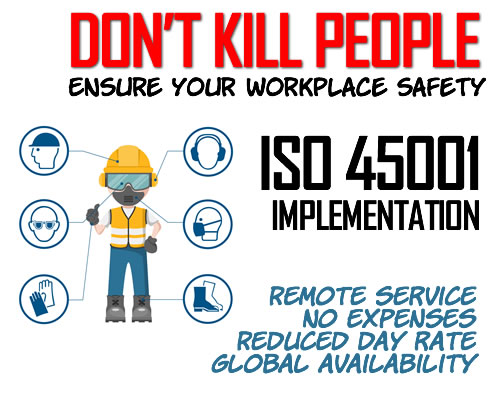Back before Oxebridge had gotten its footing as the industry watchdog, the UK’s John Seddon was already formulating well-developed and highly documented criticisms of the ISO 9001 certification scheme. Seddon literally wrote the book on the subject, called The Case Against ISO 9000 (Oak Tree Press, 2000), a copy of which I still have on my office bookshelf to this day. Seddon’s main focus was ISO standardization in the service sector, with an emphasis on call centers, but his overall criticism of the scheme was relevant to manufacturing and the entire user base of ISO 9001. Predictably, he drove the ISO gods absolutely mad with his writings, as he benefitted from being far more sober, polished and articulate than the industry’s other critics, most especially including Oxebridge and yours truly. He also had more money to throw at his campaign.
Seddon’s focus was also largely examining the ISO situation in the United Kingdom, and the UK’s BSI was a frequent target for his criticisms. In 2004, John Seddon wrote an op-ed piece in the UK newspaper The Telegraph which illustrated various problems with the ISO certification scheme:
In 1979, persuaded that it contained something of the “Japanese miracle” and keen to improve British management, Margaret Thatcher pushed the button on what was British Standard (BS) 5750.
Despite vociferous complaints from managers about bureaucracy, value and relevance, by 1987 the British Standards Institute and UK Government convinced [ISO] to adopt BS 5750 as an international standard, known as ISO 9000. We wrought an economic disease across the world. We should be ashamed.
The Standard had a plausible ring to it: write down what you do so that an external inspector can see whether you do as you say and this will form a guarantee to your customers.
It spawned inspections agencies (“certification” bodies) that have grown by leaps and bounds in parallel with uptake of the Standard. Growth has been perpetuated by the Standard itself; it encourages users to insist their suppliers do the same. It has been a pyramidal sale of unprecedented scale.
Seddon made the case that ISO 9001 was “you comply, or we don’t buy,” indicating — and remember, this was 12 years ago! — that “without marketplace coercion, ISO 9000 would have withered long ago, for it has little inherent value.” According to Oxebridge’s own surveys — in the US, anyway — marketplace coercion is now the motivating factor for between 80-90% of all companies seeking ISO 9001 certification. In Seddon’s day, the number was probably less, but still represented the majority.
More interestingly, Seddon argued that BSI must have “rubber-stamped” thousands of companies when the new ISO 9001:2000 standard came out, something that Oxebridge has suspected BSI of doing with the latest 2015 version.
On [the BSI] website you declare there will be a 95 per cent conversion rate by the first quarter of 2004. How has it been possible to assess 51,250 firms in one calendar year (a rate of 200 per business day) and have all of them “pass“ without the accreditation process being utterly corrupt and/or lacking in credibility? Was this the biggest rubber-stamping exercise in history? It is said ISO 9000 might be hard to get but it is even harder to lose; it is in the interests of the certification bodies to keep their clients.
Shortly after his op-ed, the CEO of BSI, Steven Breeze, filed his counterargument at The Telegraph. it’s a sneering and slimy bit of condescension, peppered with pseudo-facts and marketing babble that probably convinced just enough of the newspaper’s readers to keep buying BSI’s dubious services. The biggest lie peddled by Breeze is that because ISO published a thing, that thing automatically has unimpeachable validity and that Seddon is a utter tool for thinking otherwise:
Critics of 9001 such as John Seddon wilfully misunderstand the processes that go into getting an international standard written. In common with all other ISO standards, as well as European and British standards, the final document is a distillation of know-how contributed by many experts across business and society over many years.
Notice how Breeze implies malice on the part of Seddon by saying he “willfully” misunderstands ISO’s development process. In reality, it is BSI that willfully misrepresents the process, saying that ISO 9001 was created by “experts,” when it was written by idiots willing to pay ISO for the right to then give them free labor, and then hand their intellectual property over to ISO who then sells it and keeps the profits for itself. That sounds like the opposite of business expertise; imagine how long a soup kitchen would last if it charged volunteers to work there.
Breeze only lasted a few years as BSI’s CEO, and was replaced by Howard Kerr who only ramped up BSI’s shenanigans to ludicrous speed. Protected by special arrangements with the UK government, BSI can pretty much do whatever it wants, and no one — not even the Crown’s subjects — can do anything about it. For years, BSI has been openly selling it’s godawfully-named ISO 9001 software suite “Entropy” which manages the ISO 9001 requirements of corrective action, document control, management review, internal audits and nonconformities, but which BSI insists totally isn’t a violation of the prohibition against CBs providing “specific solutions” to ISO 9001 requirements. Because of their influence with UKAS, the latter ruled that Entropy wasn’t consultation, even though it totally is, and that BSI auditors routinely audit the software components of clients not using Entropy, which means they must be auditing Entropy when the client has it. They just don’t put that on the audit reports. (One BSI auditor told me, off the record, that they were trained to “never reference Entropy in a final report or nonconformity.”)
Knowing he couldn’t go tit-for-tat on the pages of The Telegraph, Seddon responded to BSI’s bullshit by publishing an “open letter” to Breeze sometime later in 2004. That was only published on Seddon’s webpage (I believe) so I thought I’d republish it here. The letter nearly exactly mirrors the arguments Oxebridge was making near, and after, the same time; it’s stunning, because, until this morning, I had never seen the letter. And the argument stands the test of time, as well, since nearly all the points are even more valid now than they were in 2004.
Click here to read Seddon’s open letter to Steven Breeze, from 2004. (PDF file, 55 kb.)
In related news, following Seddon’s lead, I’ve filed a complaint against BSI for false advertising with UK’s Advertising Standards Authority. Seddon filed one back in the last 90’s, and it was upheld, with ASA citing BSI for deceptive advertising. Since then, BSI’s advertising only worsened, prompting the new complaint. ASA has confirmed they are diligently working the complaint, although it will be delayed due to the end-of-year holidays. Click here for more on that story.
Christopher Paris is the founder and VP Operations of Oxebridge. He has over 35 years’ experience implementing ISO 9001 and AS9100 systems, and helps establish certification and accreditation bodies with the ISO 17000 series. He is a vocal advocate for the development and use of standards from the point of view of actual users. He is the writer and artist of THE AUDITOR comic strip, and is currently writing the DR. CUBA pulp novel series. Visit www.drcuba.world








